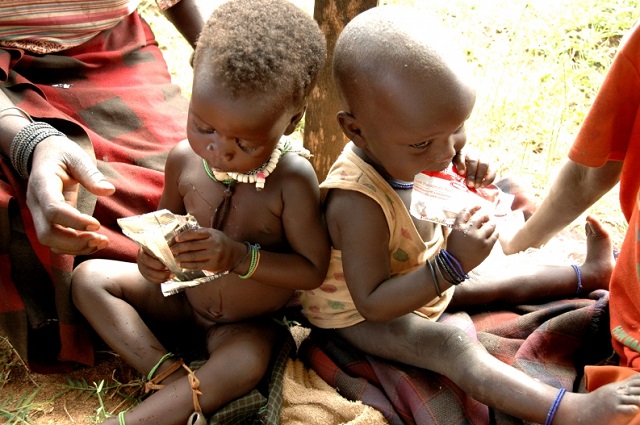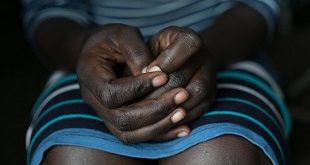
The analysis indicates that all nine districts of Karamoja, namely Kotido, Kaabong, Karenga, Nabilatuk, Abim, Moroto, Napak, Amudat, and Nakapiripirit, have been classified as IPC Phase 3. This classification signifies a crisis level of food insecurity, leading to a surge in malnutrition rates. This distressing situation mirrors last year’s findings, where every district in Karamoja experienced crisis-level food insecurity or worse for the first time.
Furthermore, an alarming 580,000 individuals, accounting for 45 percent of the population, fall into the crisis category. However, there is some hope, as the IPC predicts a slight improvement by year-end, with the projected percentage of the population in crisis dropping to 25 percent. Nevertheless, without targeted and effective intervention, approximately 32,300 people, equating to three percent of the population, are at risk of deteriorating into IPC Phase 4, the emergency phase of food insecurity.
The IPC working group, comprising representatives from the Ministry of Agriculture, Animal Industry and Fisheries, Office of the Prime Minister, Ministry of Health, the United Nations World Food Programme (WFP), the Food and Agriculture Organization of the United Nations (FAO), the United Nations Children’s Fund (UNICEF), and other partners, emphasize that the food insecurity situation in the region has worsened and will continue to deteriorate without urgent intervention.
The data reveals an alarming escalation, with 27 percent of the population facing crisis-level food insecurity or worse in 2020, increasing to 30 percent in 2021, 41 percent in 2022, and now reaching 45 percent this year. Marcus Prior, the Deputy Country Director at the World Food Program in Uganda, expressed deep concern over the worsening food security situation and the decreasing funding allocated to emergency and long-term livelihood projects.
“In our pursuit of achieving zero hunger by 2030, it is crucial that we act swiftly and decisively to improve the health and food security situation in Karamoja. We owe it to the people of this region to ensure that no one is left behind,” Marcus emphasized. The report underscores Kotido as the district with the highest level of food insecurity, as 60 percent of its population experiences crisis-level food insecurity or worse. Kaabong, Kotido, Moroto, Nabilatuk, and Napak closely follow, with each district exhibiting 50 percent of their population facing crisis-level or worse food insecurity.
Antonio Querido, the Food and Agriculture Organization’s Country Representative in Uganda, stressed the urgent need for comprehensive action to address the food insecurity crisis in Karamoja. He emphasized the importance of adopting a structural approach to tackle the root causes of chronic hunger, such as soaring food prices and the prevalence of crop and livestock diseases. Querido noted that the government, WFP, and partners are already collaborating to enhance early warning systems within the Karamoja community, enabling better prediction, reduction, and response to shocks.
Additionally, the WFP aims to improve school feeding programs, introduce alternative livelihood options like fish farming and beekeeping, and empower farmers with the knowledge and skills to produce high-quality food that commands favorable prices in the market. The report shows that food insecurity in Karamoja can be attributed to multiple factors, including insecurity, unpredictable weather patterns leading to inadequate food production, and poor health, hygiene, and sanitation practices.
The IPC nutrition assessment highlights a significant challenge faced by pregnant and breastfeeding women in Karamoja. Due to heavy domestic responsibilities, these women often struggle to allocate enough time to ensure the health and nutrition of their children. Shockingly, the analysis shows that 87 percent of children under the age of five in the Karamoja region are left alone for more than an hour at least once a week. The situation is even more critical for children under the age of two, with 100 percent of them being left unattended for an hour at least once a week.
For children above two years old, the figure stands at 79 percent. Recognizing the urgency of the situation, the government, donors, district authorities, and local communities provided life-saving treatment to 30,000 children suffering from severe acute malnutrition in 2022. This intervention successfully prevented many others from falling into the grips of malnutrition in the region. Munir Safieldin, the UNICEF Representative to Uganda, expressed concern for the children at risk of losing their lives if they do not receive the necessary support and treatment.
Safieldin emphasized the importance of collective efforts from the government, donors, partners, and communities to prevent the worsening of this crisis in Karamoja. Alex Bambona, the Assistant Commissioner of Food and Nutrition Security at the Ministry of Agriculture, assured that the government remains committed to addressing hunger and malnutrition in the country. Bambona stressed that the ongoing hunger crisis should not be taken lightly, and concerted efforts are required to alleviate the suffering of the people in Karamoja.
 The Independent Uganda: You get the Truth we Pay the Price
The Independent Uganda: You get the Truth we Pay the Price



